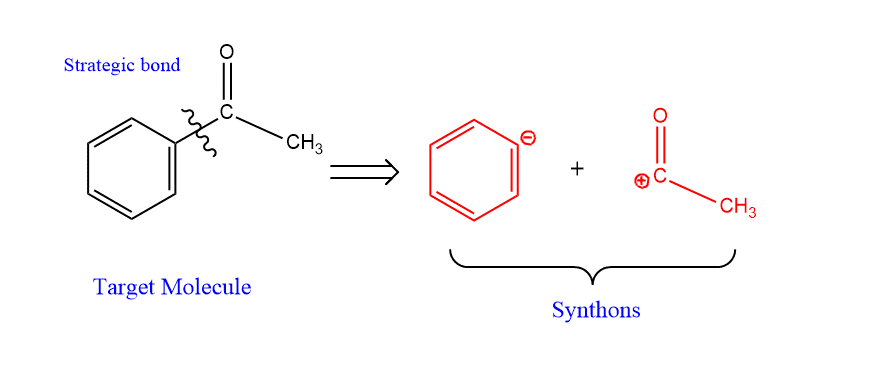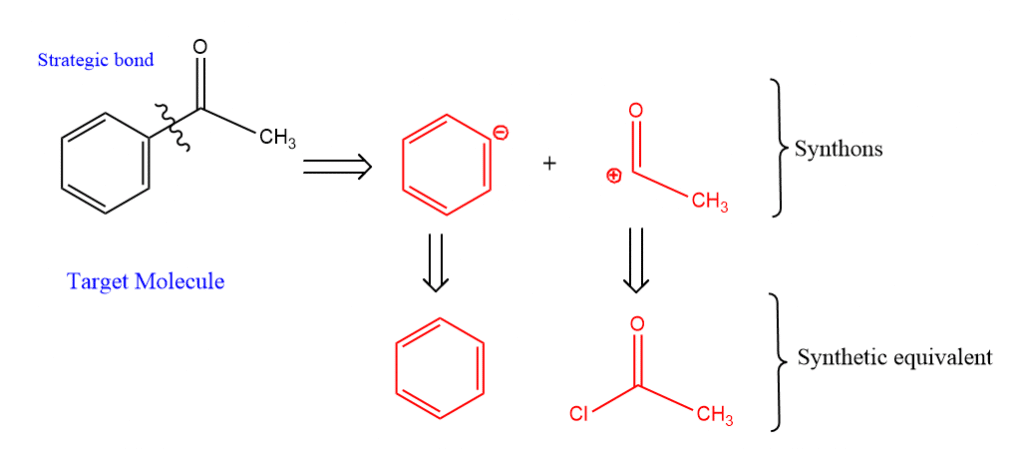Table of Contents
ToggleSynthon and synthetic equivalent are two terms mostly used in retrosynthetic analysis. These are small, simple chemical species, formed by breaking down large molecules(target molecules). The brief introduction and examples of these are explained below:
Synthon and synthetic equivalent
Define Synthon
Synthons are defined as the products of disconnection. In other words, synthons are structural units within the target molecule that can be formed or assembled by known synthetic operations
When a strategic bond in the target molecules is disconnected generally two charged species are formed, which are known as synthons. Synthons may be large molecules or small as hydrogen. The identification of synthons may suggest the route for the synthesis.
Synthons are those simple, charged chemical species, formed by imaginative breaking down of target molecule during retrosynthetic analysis. First of all, a strategic bond in the molecule is detected and broken such that two charged species are formed, one with negatively charged and another with positively charged. These are collectively known as synthons.

After knowing the simplest fragments or building units of target molecules, the synthons of target molecules are assembled together to form the target molecules. Thus, synthons are very important chemical species that lead to the correct synthetic route for the generation of a target molecule.
One point must be kept in mind that synthons are not commercially available, thus synthons are generated in the reaction by using another chemical species known as synthetic equivalent, which is commercially available.

Synthetic equivalent definition
The commercially available synthons are called synthetic equivalents. In other words, Synthetic equivalents are the chemical species that are used to generate synthons. Synthons are not commercially available but synthetic equivalents are commercially available.
We can buy synthetic equivalents available in the market to carry out the synthesis of target molecules. Thus, the synthetic equivalent does the function of synthons because synthons are imaginative charged species but synthetic equivalents are the true source of synthons.
We can figure out these terms with the help of the following examples: Have a look!!!








